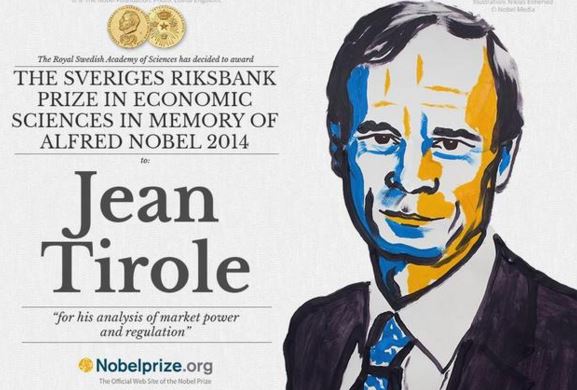List
Story > NEWS > Detail
[Resources] 4th Industrial Revolution and Platform Economy
The fourth industrial revolution inevitably occurred when the invention of the steam engine led to the first industrial revolution, the second industrial revolution, which enabled mass production and distribution revolution through the discovery of electric energy, and the third industrial revolution, which was explained by Internet-based networkization with the advent of computers by transistors. In the fourth industrial revolution, we are already living with artificial intelligence robots and virtual worlds based on virtual reality in a hyper-connected world where tangible and intangible objects and people are networked through the Internet of Things. And these technologies are converging with various industries and are being expressed in business models, leading to an era of hyper-fusion that creates multiple values economically, socially and ethically.

Specifically, what sets the fourth industrial revolution apart from the industrial revolution so far is that it is based on a business model where cooperation and competition coexist, unlike the existing success model based on exclusive competition. For example, the model that shared the existing physical labor force was inevitable for exclusive competition. After the fourth industrial revolution, however, the paradigm is changing to a model where cooperation and competition can share each other's information, make deals and create value. In the traditional Korean society, the sharing of labor can be seen in Du-na and the herds. Strictly speaking, however, the workforce is exchangeable or transactable, but at the same time it is not easy to be shared by the masses. In contrast, in the fourth industrial revolution, various tangible and intangible goods or services are being developed, and the distribution cost of tangible products is close to zero or intangible products are almost zero because they can be traded in the form of semi-finished products, not finished products. In addition, new business models have emerged that are based on customization and can be mass-produced.

The formal value chain from design → production → distribution → distribution → sale based on input output until the third industrial revolution was collapsed, and design design, drawings or seeds of agricultural products were distributed to consumers in the form of semi-finished products. For example, design drawings shipped to consumers are mounted on 3D printers, enabling them to print and manufacture products of their choice. Additionally, some modifications to the drawings can be made to personalise the individual's taste. Information on agricultural seeds or seedlings or cultivation was transmitted to consumers, allowing them to grow crops directly at home. Or, with the help of the 4th Industrial Revolution technologies such as the Internet of Things, growing and cultivation of crops remotely became possible, enabling consumers to consume both consumption and cultivation at the same time. Unlike the process of designing, producing, and distributing existing value chains, the value chain that was newly formed in the fourth industrial revolution can be explored. In addition, the value generated can be distinct from the value produced in the Third Industrial Revolution. Unlike the third industrial revolution, where production was perceived as a supplier's sole possession, the transmission of the product's drawings, design or cultivation information is creating an environment for individual consumers to produce the product as the distribution of intangible products becomes possible. Thus, since no land purchase or fixed costs for building a plant as a supplier are required, the initial investment cost is not high, which reduces the supplier's entry barriers. Thus, the concept of suppliers up to the Third Industrial Revolution and the definition of suppliers after the Fourth Industrial Revolution need to be distinguished. Providers can provide consumers with design designs, services and information, and consumers can personalize their designs to suit their preferences. The newly designed design drawings will be re-distributed while producing the products, enabling them to generate a variety of values. In other words, it has become possible to produce goods that each consumer needs directly where they need them. In addition, the changed design or information can be distributed to other consumers, where the consumer's role will be transformed back into a supplier. After all, it shows that the role boundaries between suppliers and consumers in the value chain are becoming blurred. In addition, the design design design or distribution of information in this example is digital and should be differentiated from the distribution and transport of types of products in the existing market. That is, in the fourth industrial revolution, dynamic changes in the value chain structure are possible according to the values sought by stakeholders participating in the value chain. Steve Schlafman also called for a change in the value chain, which is based on the Collapsing the Value Chain, or Mobile On-Demand Economy via mobile devices.

The two-sided market, claimed by Jean Tyrol, a 2014 Nobel laureate in economics, defined it as "a market in which two different types of user groups interact through the platform, and the value generated is affected by indirect network externalities" (Lee Sang-gyu 2010). That is, in a two-sided market, the boundaries between suppliers and consumers become blurred and, depending on the value that is generated, the role-biasing between the consumer and the supplier is also referred to as a paradigm shift into a platform economy that can occur. A platform is a physical, virtual, or institutional environment provided to facilitate transactions or interactions by different user groups, and a provider of the platform generates revenue by charging fees for both or both sides of the platform. In addition, information, drawings and designs distributed on the platform can be reproduced (copy) at a low cost and distributed electronically, so Jeremy Rifkin's argument is that marginal costs are close to zero. In other words, surplus resources produced in this way enable the creation of transactions through sharing among stakeholders, resulting in a variety of economic and social value-generating phenomena.
The fourth industrial revolution inevitably occurred when the invention of the steam engine led to the first industrial revolution, the second industrial revolution, which enabled mass production and distribution revolution through the discovery of electric energy, and the third industrial revolution, which was explained by Internet-based networkization with the advent of computers by transistors. In the fourth industrial revolution, we are already living with artificial intelligence robots and virtual worlds based on virtual reality in a hyper-connected world where tangible and intangible objects and people are networked through the Internet of Things. And these technologies are converging with various industries and are being expressed in business models, leading to an era of hyper-fusion that creates multiple values economically, socially and ethically.

Specifically, what sets the fourth industrial revolution apart from the industrial revolution so far is that it is based on a business model where cooperation and competition coexist, unlike the existing success model based on exclusive competition. For example, the model that shared the existing physical labor force was inevitable for exclusive competition. After the fourth industrial revolution, however, the paradigm is changing to a model where cooperation and competition can share each other's information, make deals and create value. In the traditional Korean society, the sharing of labor can be seen in Du-na and the herds. Strictly speaking, however, the workforce is exchangeable or transactable, but at the same time it is not easy to be shared by the masses. In contrast, in the fourth industrial revolution, various tangible and intangible goods or services are being developed, and the distribution cost of tangible products is close to zero or intangible products are almost zero because they can be traded in the form of semi-finished products, not finished products. In addition, new business models have emerged that are based on customization and can be mass-produced.

The formal value chain from design → production → distribution → distribution → sale based on input output until the third industrial revolution was collapsed, and design design, drawings or seeds of agricultural products were distributed to consumers in the form of semi-finished products. For example, design drawings shipped to consumers are mounted on 3D printers, enabling them to print and manufacture products of their choice. Additionally, some modifications to the drawings can be made to personalise the individual's taste. Information on agricultural seeds or seedlings or cultivation was transmitted to consumers, allowing them to grow crops directly at home. Or, with the help of the 4th Industrial Revolution technologies such as the Internet of Things, growing and cultivation of crops remotely became possible, enabling consumers to consume both consumption and cultivation at the same time. Unlike the process of designing, producing, and distributing existing value chains, the value chain that was newly formed in the fourth industrial revolution can be explored. In addition, the value generated can be distinct from the value produced in the Third Industrial Revolution. Unlike the third industrial revolution, where production was perceived as a supplier's sole possession, the transmission of the product's drawings, design or cultivation information is creating an environment for individual consumers to produce the product as the distribution of intangible products becomes possible. Thus, since no land purchase or fixed costs for building a plant as a supplier are required, the initial investment cost is not high, which reduces the supplier's entry barriers. Thus, the concept of suppliers up to the Third Industrial Revolution and the definition of suppliers after the Fourth Industrial Revolution need to be distinguished. Providers can provide consumers with design designs, services and information, and consumers can personalize their designs to suit their preferences. The newly designed design drawings will be re-distributed while producing the products, enabling them to generate a variety of values. In other words, it has become possible to produce goods that each consumer needs directly where they need them. In addition, the changed design or information can be distributed to other consumers, where the consumer's role will be transformed back into a supplier. After all, it shows that the role boundaries between suppliers and consumers in the value chain are becoming blurred. In addition, the design design design or distribution of information in this example is digital and should be differentiated from the distribution and transport of types of products in the existing market. That is, in the fourth industrial revolution, dynamic changes in the value chain structure are possible according to the values sought by stakeholders participating in the value chain. Steve Schlafman also called for a change in the value chain, which is based on the Collapsing the Value Chain, or Mobile On-Demand Economy via mobile devices.

The two-sided market, claimed by Jean Tyrol, a 2014 Nobel laureate in economics, defined it as "a market in which two different types of user groups interact through the platform, and the value generated is affected by indirect network externalities" (Lee Sang-gyu 2010). That is, in a two-sided market, the boundaries between suppliers and consumers become blurred and, depending on the value that is generated, the role-biasing between the consumer and the supplier is also referred to as a paradigm shift into a platform economy that can occur. A platform is a physical, virtual, or institutional environment provided to facilitate transactions or interactions by different user groups, and a provider of the platform generates revenue by charging fees for both or both sides of the platform. In addition, information, drawings and designs distributed on the platform can be reproduced (copy) at a low cost and distributed electronically, so Jeremy Rifkin's argument is that marginal costs are close to zero. In other words, surplus resources produced in this way enable the creation of transactions through sharing among stakeholders, resulting in a variety of economic and social value-generating phenomena.



